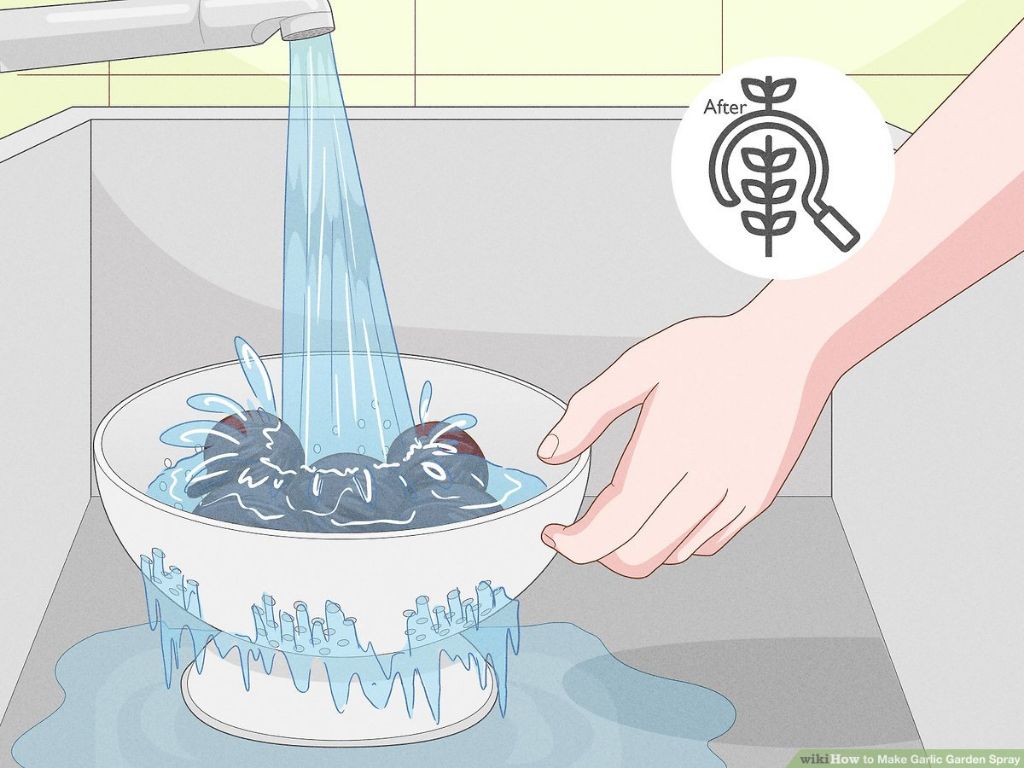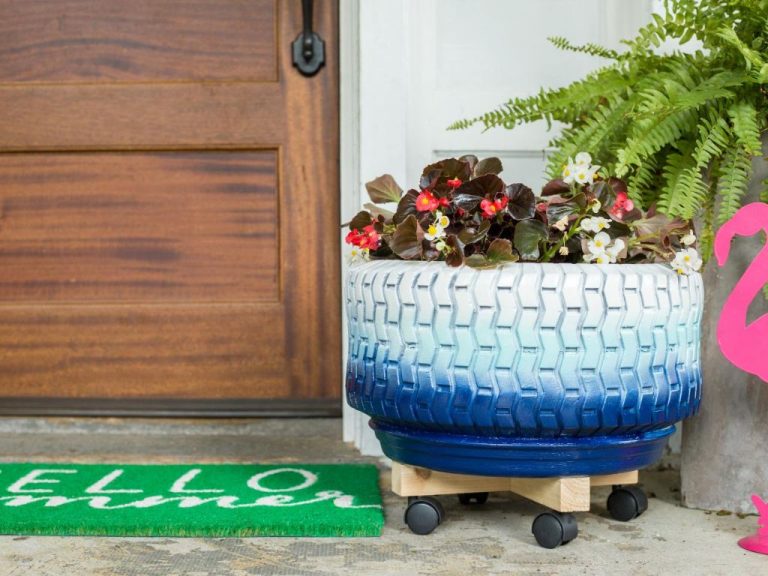Homemade Bug Repellents For Your Garden Plants
Gardeners strive to keep their plants healthy and productive while avoiding damage from insect and critter pests. Many reach for chemical pesticides as an easy solution. However, these synthetic toxins can harm beneficial insects like bees and ladybugs, contaminate garden fruits and vegetables, and pollute water and soil. Their risks far outweigh their benefits (source).
Fortunately, there are many effective homemade and natural pest control options for protecting garden plants that avoid these downsides. In this guide, we’ll share recipes and instructions for natural repellent and insecticidal sprays using common household ingredients. They will help safely deter common garden pests while supporting, rather than disrupting, the natural ecosystem.
Soap Spray
A simple homemade bug spray for plants can be made by mixing mild soap with water. The soap disrupts the external membranes of soft-bodied insects like aphids, whiteflies, and spider mites, essentially suffocating them. Dish soap or insecticidal soap purchased from a garden center works well for this purpose.
To make a basic soap spray at home, mix 1-2 tablespoons of liquid soap (avoid detergents) per gallon of water. Shake vigorously to emulsify the solution. Spray liberally on infested plants, especially the undersides of leaves where pests like to hide. Let sit for a few minutes before rinsing off with clean water. Repeat applications may be needed. Refer to this guide for exact ratios.
The main advantage of soap sprays is that they don’t leave any toxic residue on plants or in the environment. They can be used up until the day of harvest. Soap sprays work best on warm, sunny days when pests are active.
Neem Oil
Neem oil comes from the neem tree (Azadirachta indica), which is native to India. The oil contains azadirachtin, which is a compound that repels and deters insects.
Neem oil can be used as an organic insecticide for plants. The National Pesticide Information Center explains that neem oil “reduces insect feeding and acts as a repellent. It also interferes with insect hormone systems, making it harder for insects to grow and lay eggs.” (source)
To use neem oil as an insecticide for plants:
- Mix neem oil with water according to package directions. Use the minimum amount for the spray to be effective.
- Add a small amount of mild soap to the neem oil and water mixture.
- Spray the neem oil solution liberally on plant leaves, stems, and buds where insects maybe feeding or laying eggs.
- Reapply weekly or after rain.
Garlic Spray
Garlic contains sulfur compounds that naturally deter common garden pests like aphids, spider mites, fungus gnats, Japanese beetles, and caterpillars (https://www.epicgardening.com/how-to-make-garlic-spray/). Making a garlic spray is an easy DIY pest control for your garden.
To make garlic spray, you’ll need:
– 1/4 pound garlic cloves (2-3 whole bulbs)
– 1 quart water
– Blender
– Cheesecloth
– 1 quart glass jar
Blend the garlic cloves and water together, then strain the mixture through a cheesecloth into a glass jar. This concentrated garlic spray can be diluted at a 1:1 ratio with water and sprayed directly onto affected plants.

Apply garlic spray every 1-2 weeks to deter pests. The scent of garlic will repel insects without harming your plants.
Hot Pepper Spray
Hot pepper spray is an organic homemade pesticide that can help deter insects and other pests from devouring garden plants. The active ingredient in hot peppers that provides the heat and pungency is capsaicin. When sprayed on plants, the capsaicin acts as an irritant to many soft-bodied insects and arthropods, causing them discomfort upon contact and repelling them from treated areas.
To make a basic hot pepper spray at home, combine 1 cup of chopped hot peppers like jalapeños or habaneros (including seeds) with 2 cups of water. Bring the mixture to a boil and then let it sit for 24 hours. Strain out the solids and add 1/2 teaspoon of mild organic liquid soap (such as Castile soap) to help the spray stick to plants. The soap isn’t mandatory but can help improve efficacy. Pour the hot pepper solution into a spray bottle for easy application (How To Make Hot Pepper And Garlic Spray – Protect Your Garden Plants – Old World Garden Farms).
Before spraying the hot pepper solution liberally on your plants, it’s a good idea to test it out first on a few leaves or in a small section. Hot peppers can potentially damage more delicate vegetation like seedlings, so monitor for any signs of leaf burn before treating your entire garden. Reapply the homemade spray after heavy rains as needed.
Vinegar Spray
Vinegar is acidic enough to kill some soft-bodied insects like aphids, mealybugs, and spider mites on contact. The acetic acid in vinegar dissolves the insects’ exoskeleton and causes dehydration. Make a simple homemade vinegar spray by mixing 1 cup of white distilled vinegar with 1 quart of water. Add in 1 teaspoon of liquid dish soap which helps the solution stick to plants. Put the mixture in a spray bottle and apply to infested plants, coating the tops and bottoms of leaves. Reapply every 5-7 days until the infestation clears.
Vinegar spray works best as a preventative measure. Start applying early in the season before bugs take hold. Be aware that vinegar can burn tender new growth, so test on a small area first. Avoid spraying during the heat of the day or your plants may get sunscalded.Vinewear can also alter the pH level of your soil with repeated use, so don’t overdo applications.
Source: https://www.homesandgardens.com/gardens/homemade-bug-sprays
Diatomaceous Earth
Diatomaceous earth is a naturally occurring powder made from fossilized remains of diatoms, a type of hard-shelled algae. The powder is very abrasive and absorbs lipids from the waxy outer layer of insects’ exoskeletons, causing them to dehydrate and die [source]. When applying diatomaceous earth in the garden, it’s important to get a very fine powder that will stick to the insects. Aim to create a thin coating around the stems, leaves, and top layer of soil of your plants. Be sure to reapply after rain or watering since diatomaceous earth absorbs water and becomes less effective when wet. Wear a mask when working with the powder as you don’t want to inhale it.
Insecticidal Soap
Insecticidal soap is a mixture containing potassium salts of fatty acids that kills soft-bodied insects like aphids, mealybugs, thrips, and spider mites when sprayed directly on them (https://www.thespruce.com/how-to-use-insecticidal-soap-1902893). The soap disrupts the structure and permeability of the insect’s cell membranes, causing them to dehydrate and die. Insecticidal soaps are only effective during application and shortly after, but they break down quickly and do not leave toxic residues on plants.
To apply insecticidal soap, mix 1-2 tablespoons of the concentrate per gallon of water. Spray liberally on infested plants, especially the undersides of leaves where insects hide. Make sure to get complete coverage. For best results, spray in the morning or evening, not midday when the sun can burn wet leaves. Always test on a few leaves first to ensure the soap does not damage the plant. Insecticidal soaps are safe for most plants, but it’s best to check since some sensitive species like ferns may get burned (https://hgic.clemson.edu/factsheet/insecticidal-soaps-for-garden-pest-control/). Repeat applications may be needed for heavy infestations.
Bt (Bacillus thuringiensis)
Bt (Bacillus thuringiensis) is a natural bacteria that specifically targets caterpillars when they ingest it. Bt works by paralyzing the digestive system of caterpillars, leading to them stopping feeding and ultimately dying. It’s a great organic option for controlling caterpillars in the garden.
To apply Bt spray, mix according to label instructions and spray plant leaves, being sure to coat the undersides as well. Reapply after rain or every 7-10 days as needed. It’s most effective when caterpillars are younger. Bt is non-toxic to humans, birds, pets, and beneficial insects like bees (source: https://www.planetnatural.com/bacillus-thuringiensis/).
Critter Repellents
Certain substances can act as physical deterrents to keep pests away from your plants. Spreading materials like hair clippings, coffee grounds, and cayenne pepper around the base of plants and in your garden beds creates an uncomfortable environment that insects and animals want to avoid. Here are some tips for using common household items as critter repellents:
Human hair clippings can be placed in mesh bags or old stockings and hung near plants that are being attacked by deer, rabbits, or insects. As the wind blows, the hair moves around creating an unsettling presence that scares away any unwanted critters. Make sure to get clean hair clippings and change them out occasionally as they degrade.
Used coffee grounds have an intense aroma that many insects dislike. Spread grounds around the base of plants or sprinkle them along the edges of garden beds. Reapply after rainfall to maintain the strong scent. The grounds also act as a natural fertilizer as they break down.
Cayenne pepper and other types of hot chili powders can be combined with water or vegetable oil and sprayed directly onto plants. This creates a spicy barrier that repels everything from ants to rabbits. Reapply after heavy rain. Be careful not to overspray delicate plant leaves.
Set up physical barriers like mulch, rocks, wood chips or pine cones around plants to prevent pests from approaching the stems and leaves. These materials can also be combined with irritating substances like hair or pepper to create an uncomfortable zone. Check barriers regularly and replenish as needed.
Always monitor your plants closely after applying repellents. While these DIY methods are natural, they could still potentially damage plant tissue depending on the concentration and frequency of application.






